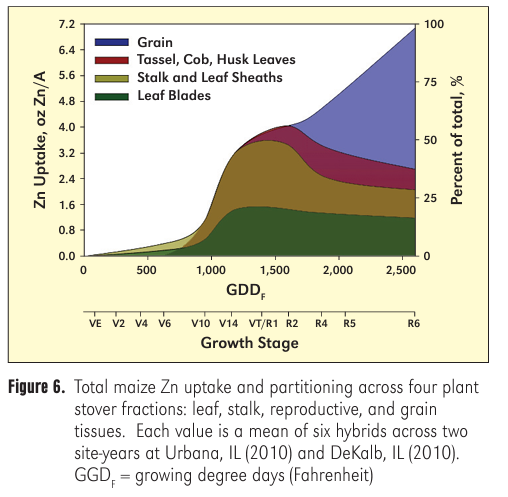If you haven't already started learning about the 4Rs of nutrient stewardship, it is an excellent set of fundamentals to guide nutrient management on any farm.
There are many resources out there to learn more about the 4Rs of nutrient stewardship, so this blog post isn't going to reinvent the wheel, but instead, we wanted to share with you a little about how Soileos fits in the context of 4R principles.
Check out the resources at the end of the article for more information, courses, and podcast episodes!
There are several elements to consider within each interconnected principle below, but it boils down to
- Right fertilizer source at the
- Right rate, at the
- Right time and in the
- Right place
Right Source
Lucent Bio's flagship product—Soileos—is a soil-applied, smart crop nutrition delivery system. This dry granular pellet can be bulk blended and placed in-furrow through standard equipment. It enhances yields, crop resilience, and soil health with on-time nutrient delivery and sustained bioavailability, allowing the crop to maximize its genetic potential.
At Lucent Bio, we're trying to make the best sources of crop nutrition by repurposing cellulose derived from crop processing residues such as pea, lentil or rice hulls. Our process attaches nutrients to cellulose fibre tightly enough that they don't leach through the soil profile or become tied up (and thus unavailable). As the Soileos fibres are broken down through microbial action, the nutrients are released, resulting in superior nutrient uptake compared to sulphate or EDTA sources.
Lettuce Yield by Zinc Source and Rate, California, 2021 - Figure 1
Corn Yield by Zinc Source, Manitoba 2021 - Figure 2
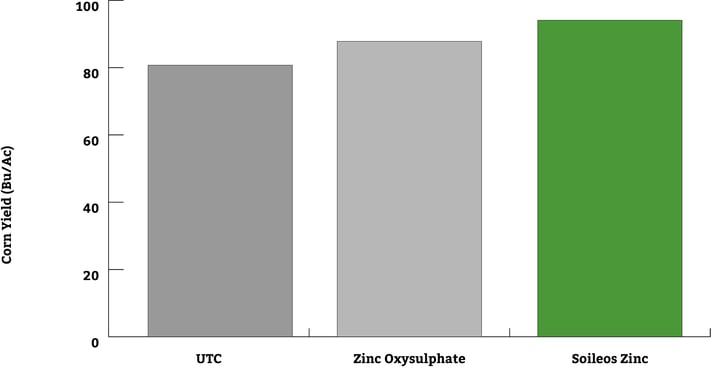
And part of why we think this is happening is due to the unique composition of matter and the microbial mode of action that results in the efficient delivery of nutrients.
Right Rate
This is an interesting topic when it comes to Soileos. The principle of the Right Rate is based on a few ideas. Ultimately it is a threshold where, if it is not reached, the other 4R principles will not be able to offset.
As shown in the graph above (Figure 2), we see a superior response to even greater rates in many of our trials than a sulphate competitor product. Sometimes this gets referred to as agronomic efficiency. I.e., can I use fewer actual lbs./acre and still deliver enough nutrients to the crop when it needs it?
We're all familiar with a nitrogen dose-response curve and trying to determine optimum rates to maximize profitability. I'm sure many people are double-checking their math on optimum rates this year!
Typical Dose Response Curve of Fertilizer - Figure 3
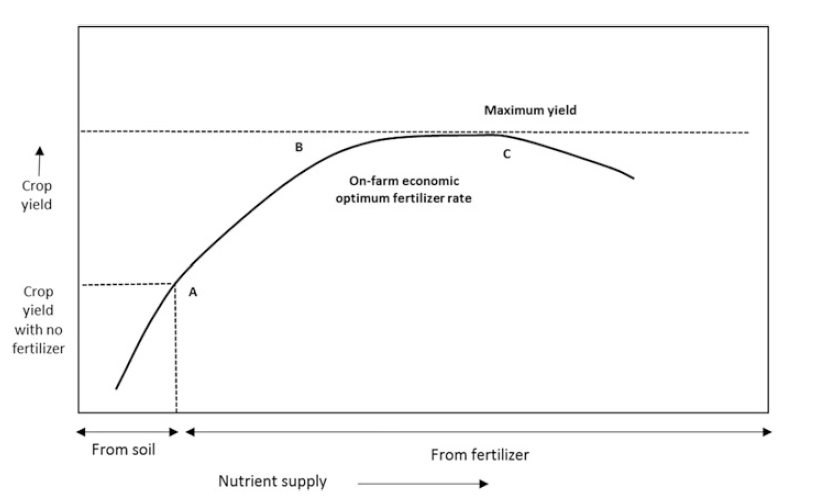
Often, we rely on soil or previous year's tissue tests to diagnose nutrient deficiency challenges.
Historically research has used soil tests as the diagnostic tool for micronutrients. We've heard many agronomists refer to soil tests as a blunt tool, not a scalpel. It's better than applying nutrients blind, but they're also not perfect.
However, not all soils, and consequently, not all soil tests are made equal. And one of the biggest things we've found in our research is that several parameters we would typically analyze are not predictive of a yield response to Soileos.
Yield Advantage vs Organic Matter (Corn/Wheat/Soybeans 2021) - Figure 4
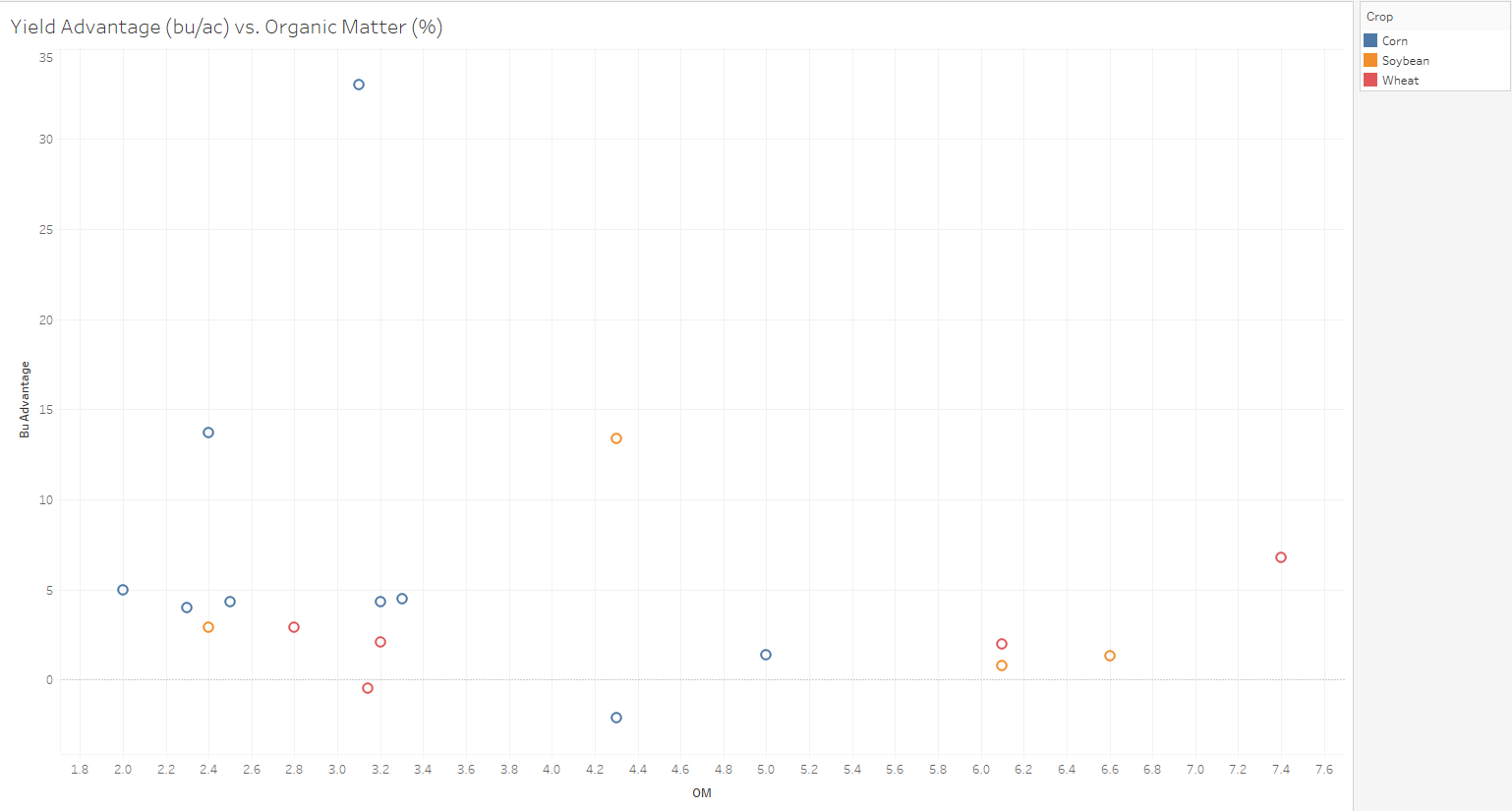
Yield Advantage vs Soil Zinc ppm (Corn/Wheat/Soybeans 2021) - Figure 5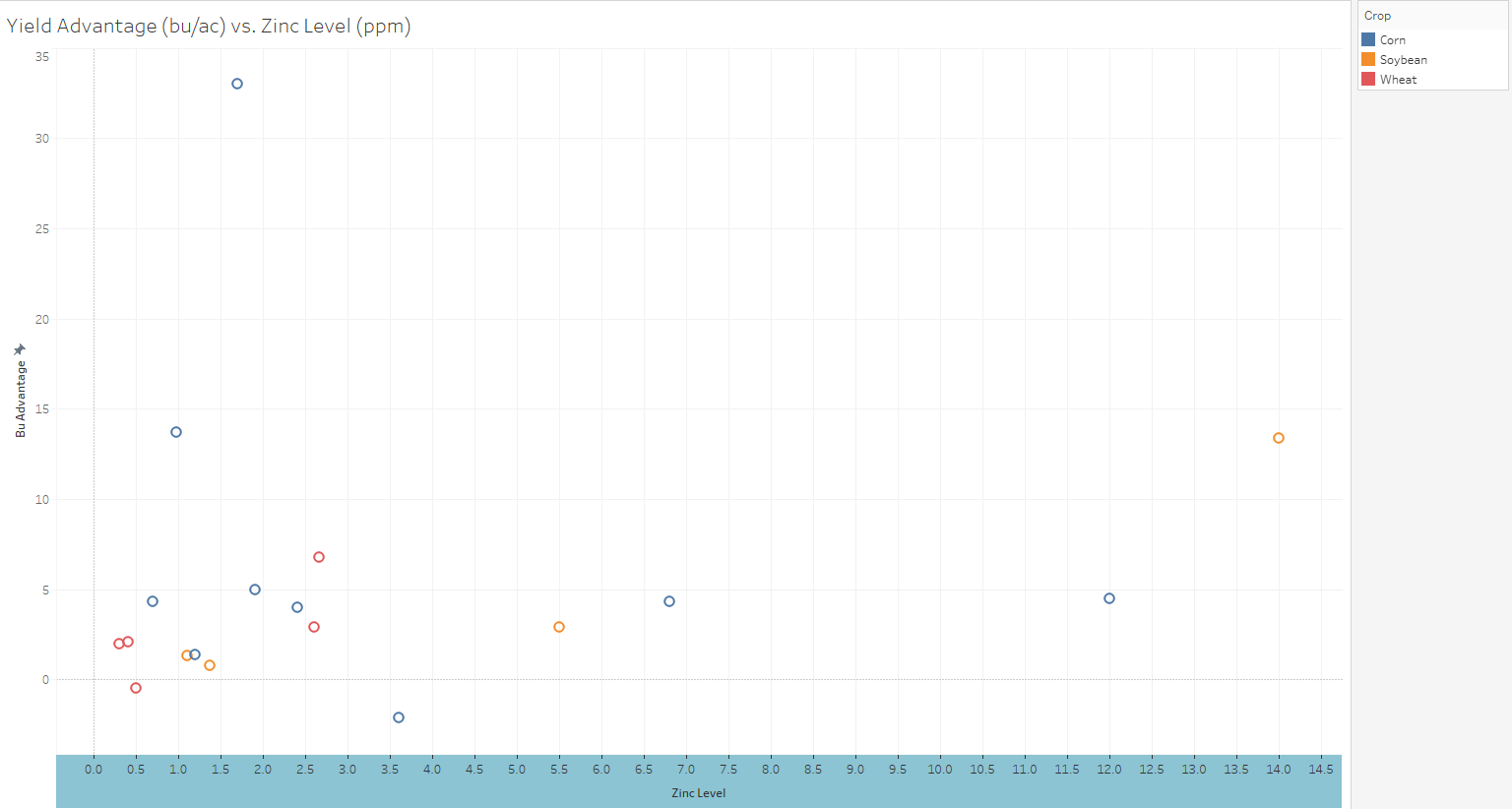
Yield Advantage vs Soil pH (Corn/Wheat/Soybeans 2021) - Figure 6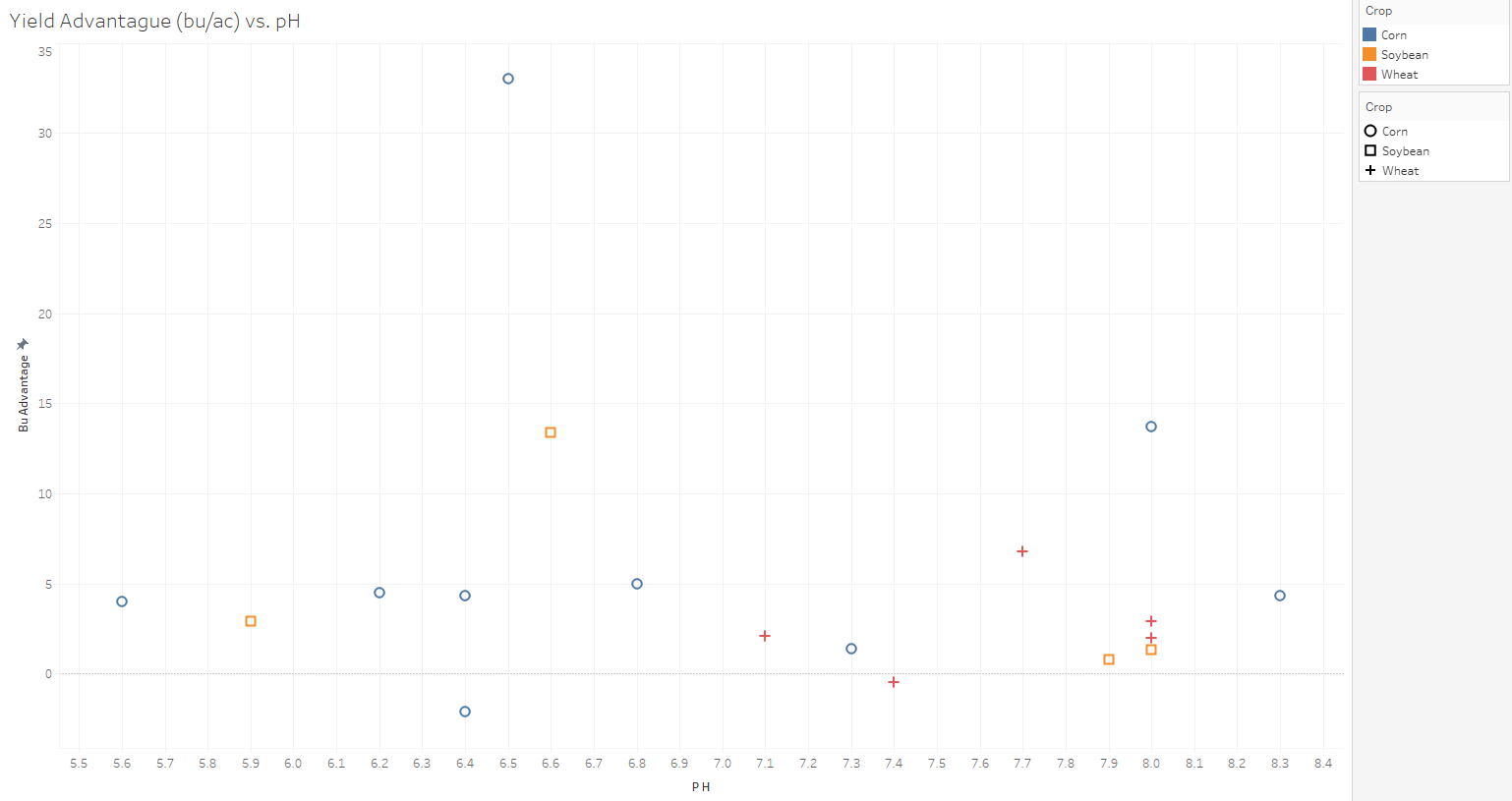
So go figure. We always get this question: "If I was starting on my farm, where would you recommend I start? "
Soileos works well in many situations, it seems. Still, if there are some tougher acres with higher pH, then Soileos might have an advantage over other options on the market, and if you know about some low zinc levels in your soils, then either or both of those are good starting points for a farm working with Soileos in year 1.
Right Time
Most of our research has focused on Spring applications pre-plant or at-plant.
There are no foliar or liquid treatment products in our Soileos line (yet), but our 1-time early-season application carries enough nutrients for an entire crop, so other applications of nutrients haven't been necessary for our growers.
We have had many folks ask about winter crops and fertility placement. While we haven't studied this closely yet, it is in the works for the 2022 Fall - 2023 Crop in corn and winter wheat. Since Soileos' release is driven by microbial activity, and there isn't much of that through the winter months, a fall application should also yield great results.
We are also pursuing organic certification! We've had a few organic corn growers inquire about how an in-season application could be possible with their cultivation pass. That timing needs a closer look, but zinc demand does accelerate much later in the corn crop, so it could work out great!
Check out this great work from the University of Illinois on Corn Nutrient Uptake!
Link: Corn nutrient uptake and partitioning
More to come on different timings for Soileos placement, but Spring (pre or at plant) has worked out well in our trial program.
Right Place
Soileos is designed to work with existing fertilizer blending and field equipment. The pellet blends with other dry fertilizers and can be placed with air-seeders, strip-till as a side-band, 6" deep-band, or in-furrow. Broadcast and incorporate applications are also suitable for Soileos, as shown by the data below from our 2021 Trials:
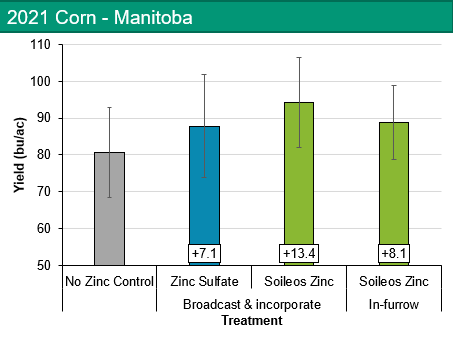
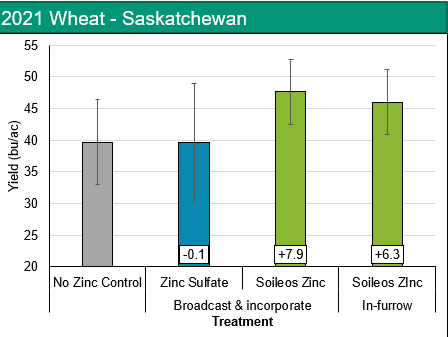
If you are new to the 4Rs, here are a few great resources:
Intro articles:
Courses:
Fertilizer Canada has put together some excellent courses available here.
Or, if you prefer audio-based forms of content, here are some good listens:
Podcast Episodes:
The Agronomists, Ep 24: Deb Campbell and Don Flaten on 4R nutrient strategy
From the Ground Up: with Jim Boak 4R Nutrient Stewardship
Letting the 4Rs of Nutrient Management Guide Your Strip-Till System
For Farmers: How to get acres counted as 4R (Canola Council)
